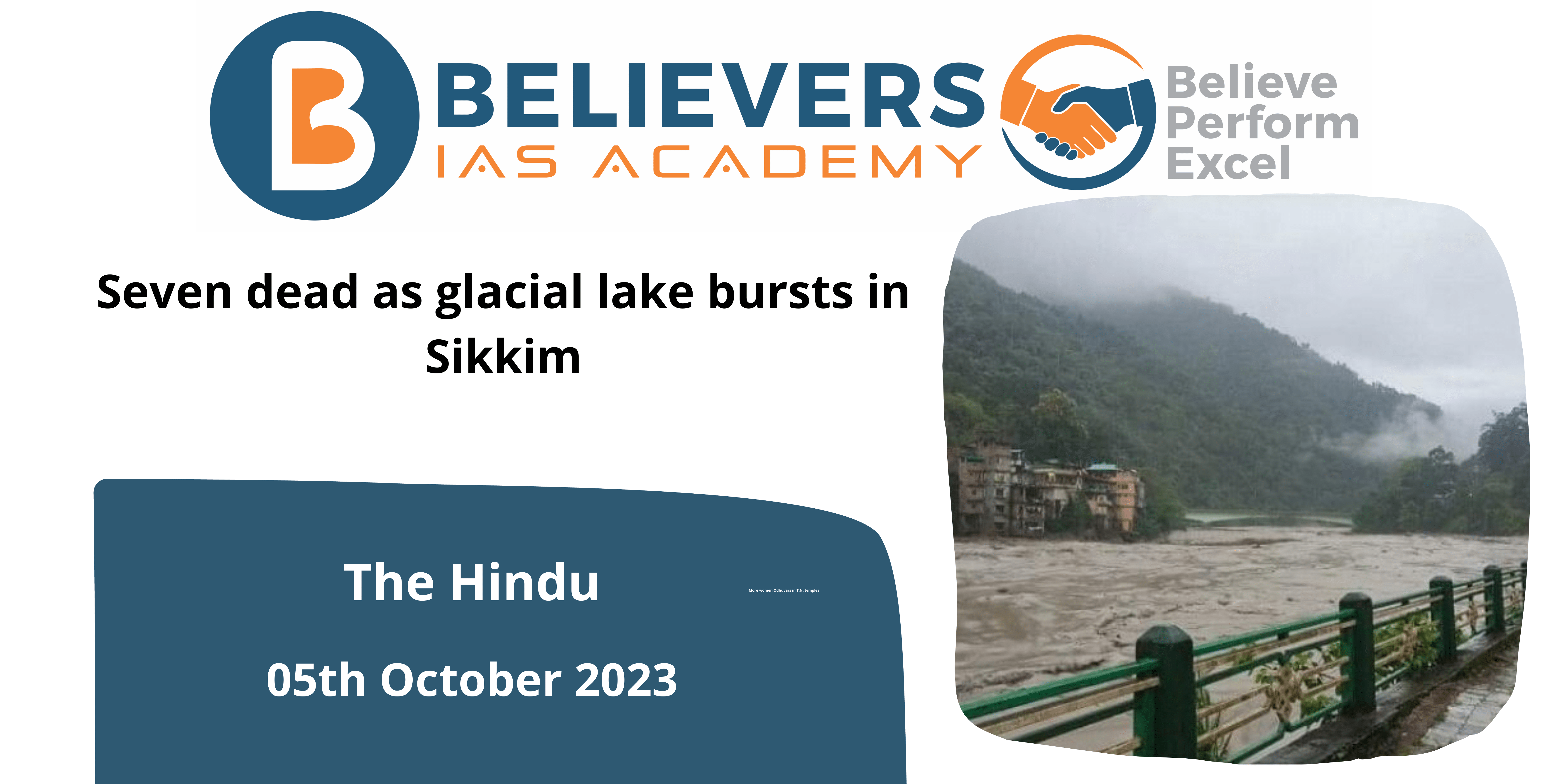Seven dead as glacial lake bursts in Sikkim
Context
Following flash floods that engulfed Sikkim on Wednesday, at least seven people were murdered, and dozens more suffered injuries or went missing. The lake, which was created by the gradual melting of a Himalayan glacier, is thought to have caused the floods when it abruptly overflowed and submerged the Teesta River basin.
Where is the Teesta River Basin located?
- The Teesta River basin covers an area of 11,888 km2 in India and Bangladesh. The basin stretches from Sikkim in India to Bangladesh’s northern Rangpur division. The river has a total catchment area of 12,159 km2 and is 414 km long.
- The Teesta River has the fastest flow rate in India and is the largest river in Sikkim. Before flowing into the Bay of Bengal, it rises in the Sikkim region of the Himalayas and travels through Bangladesh and West Bengal. The river flows into the Brahmaputra River as a tributary.
- The population of the Teesta River basin is over 30 million. The range of the yearly average rainfall is 2000 to 5000 mm. Droughts during the lean season and floods during the rainy season are a crisis for the basin.
What are the Glacial lakes?
- Glacial lakes are bodies of water formed when a glacier erodes land and then melts, filling the resulting depression. They are frequently flanked by steep slopes and can be found in glacier-covered locations.
- Examples of glacial lakes include Devtal Glacial Lake: The tallest glacial lake in India, located in the Garhwal region. Himalaya
- Glacial lakes can cause floods. For example, in 2008, the melting ice front of Chile’s Cachet II Lake broke, quickly draining the lake. The tremendous amount of water flooded the Baker River, causing the flow rate to suddenly quadruple, flooding villages downstream.
What is the difference between flash floods and normal floods?
- Rapid start, high intensity, brief duration, and imminent hazard to life and property are the hallmarks of flash floods. On the other side, floods take a longer time to develop gradually, the water level rises more slowly, and they often persist longer. Both kinds of floods have the potential to be disastrous, but flash floods are more deadly because of how unexpected and abrupt they are.
How to face flash floods?
- Remain Informed: Pay attention to weather forecasts and keep yourself updated on local weather conditions. Register for emergency alerts and keep up with local news.
- Flood-prone regions should be avoided: Recognise the areas close to you that are vulnerable to flash flooding. Low-lying regions, valleys, and regions close to rivers, streams, or dams may fall under this category.
- Make a strategy for emergencies: Create a strategy for emergencies for you and your family. A meeting place, an evacuation route, and a mode of communication in case you become separated should all be included in this plan. Together with your family, run through the plan.
- Prepare an emergency supply kit: Fill the kit with non-perishable food, water, batteries, flashlights, a first aid kit, critical papers, and additional clothing. Keep this kit in a place that is simple to get to.
- Avoid flood-prone areas: Avoid driving through or walking through flooded areas when it is raining heavily or when a flash flood warning is in effect. Even small amounts of water might knock you off your feet or cause your car to stall. The best course of action is to wait for the floodwaters to subside inside.




